14 Home Remedies For White Tongue And Prevention Tips
The easiest and best hygiene hacks to keep your tongue clean and odor-free.

Image: Shutterstock
Have you ever looked in the mirror and noticed that you have a white tongue? If that’s the case, you have probably been slacking on your dental hygiene for some time. If you are wondering how to get rid of a white tongue, you have come to the right place. Thankfully, in most cases, this condition clears up without treatment. This article contains some fantastic home remedies as well as a few helpful hints for getting rid of a white tongue quickly. To learn more, keep reading!
In This Article
What Is A Furry Tongue?
When your tongue turns white all over or in patches, it is referred to as a furry tongue. This condition is usually a common occurrence.
Most often, chances are that your entire tongue is coated white or there are white patches/spots spread all over it. It is a sign of poor hygiene and can cause a bad taste in the mouth. Although not alarming by itself, it could sometimes hint at an underlying infection or even early cancer.
Therefore, it is necessary to keep an eye on such symptoms and reach out to your doctor if your tongue continues to remain white.
Let us look at less severe conditions or factors that can cause this condition.
Key Takeaways
- Adequate oral care is required, including salt water rinse.
- Drink lots of water.
- Consume probiotics and rinse with baking soda.
- Avoid irritants, such as alcohol and smoke.
- Consume a nutritious, balanced diet.
- If possible, avoid using antibiotics.
- For underlying medical concerns, consult a doctor.
What Causes A White Tongue?
More often than not, a white tongue is usually caused by poor oral hygiene. In some cases, this can lead to tiny, inflamed, and swollen bumps (papillae) or blisters on the tongue.
These bumps can trap microbes, food, dirt, and even dead cells. The collection of this debris in the papillae causes your tongue to turn furry or white.
The causes of a white tongue include:
- Dry mouth
- Dehydration
- Fever
- Leukoplakia – A common condition that occurs due to smoking and has the potential to develop into oral cancer in rare cases.
- Oral thrush – An oral infection caused by Candida(may cause symptoms like a white tongue with red spots).
- Oral lichen planus – A problem with your immune system that can cause white patches and sores to form in your tongue and mouth.
- Syphilis – A sexually transmitted condition that can even cause sores in your mouth.
- Dietary Factors: Sugary and processed foods can cause a white tongue by creating an imbalance in oral bacteria.
- Tongue or mouth cancer
Risk Factors For White Tongue
Some lifestyle choices that may put you at a higher risk of developing a white tongue are:
- Smoking and/or chewing tobacco
- Drinking too much alcohol
- Not brushing your teeth and flossing enough
- Mouth breathing
- Consuming excess of soft foods
- Irritation from the sharp edges of your teeth or dental instruments rubbing against your tongue
- Medications like antibiotics that can cause an oral yeast infection
White tongue can also be a symptom of oral thrush. Learn more in the next section.
White Tongue Vs. Thrush
A white tongue can be a sign of various conditions, including thrush. Thrush, or oral candidiasis, is a fungal infection caused by candida yeast overgrowth (1). It develops in warm and moist conditions and results in white, creamy lesions on the tongue, gums, and inner cheeks. A white tongue, however, can also be caused by dehydration, poor oral hygiene, or certain medications.
Thrush may cause irritation or pain and typically requires antifungal medication for its management. But a white tongue from other causes usually improves with better oral hygiene or treatment of underlying issues, such as indigestion.
If the only symptom you are exhibiting is a white tongue, there is nothing to worry. However, if you notice any of the following symptoms, it is best to get in touch with your doctor immediately.
When To See A Doctor
You must seek medical intervention immediately if you develop any of the severe symptoms listed below:
- A burning or painful sensation on your tongue
- Development of open sores in the mouth
- Trouble in chewing, swallowing, or even talking
- Appearance of skin rashes
- Weight loss
- Sudden onset of fever
If your only concern is the unexplained white patches on your tongue, you can give the following natural remedies a try to treat and prevent the condition.
How To Get Rid Of A White Tongue Naturally
- Baking Soda
- Probiotics
- Turmeric
- Coconut Oil Pulling
- Sea Salt
- Aloe Vera Juice
- Colloidal Silver
- Garlic
- Oregano Oil
- Pau D’arco Tea
- Apple Cider Vinegar
- Glycerin
- Cranberry Juice
- Neem
Home Remedies To Treat A White Tongue
1. Baking Soda

You Will Need
- 1 teaspoon of baking soda
- A few drops of water
- A soft-bristled toothbrush
What You Have To Do
- To a teaspoon of baking soda, add a few drops of water to form a thick paste.
- Using a soft-bristled toothbrush, brush your tongue gently for a minute or two.
- Rinse your mouth with water.
How Often You Should Do This
You must do this tongue brushing once daily.
Why This Works
The alkaline nature of baking soda can help in neutralizing the acids in your mouth, thus restoring its pH. This has an antimicrobial effect on the oral pathogens and can help in their elimination, thus treating a white tongue (2).
Note: You may also add 1 tablespoon of hydrogen peroxide to this paste for best results.
2. Probiotic Yogurt

You Will Need
1 bowl of plain probiotic yogurt
What You Have To Do
- Consume a bowl of plain probiotic yogurt daily.
- You can also leave a little yogurt on your tongue and rinse it off with water if you do not wish to consume it daily.
How Often You Should Do This
You must follow this remedy once daily.
Why This Works
Probiotic yogurt contains beneficial cultures of L. acidophilus and B. lactis. These can help combat the trouble-causing oral pathogens like bacteria and fungi that may be responsible for the development of white patches on your tongue (3).
3. Turmeric
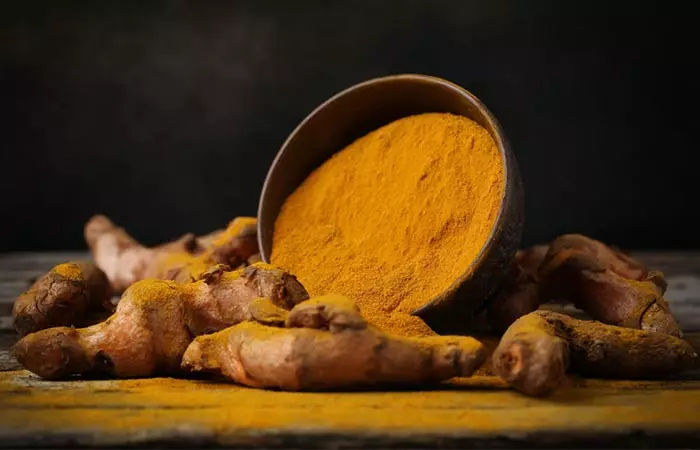
You Will Need
- ½ teaspoon of turmeric powder
- A few drops of lemon extract
- A soft-bristled toothbrush
What You Have To Do
- Mix half a teaspoon of turmeric powder with a few drops of lemon juice to form a paste.
- Using your finger or a soft-bristled brush, scrub your tongue gently for a couple of minutes.
- Rinse your mouth with plain water.
How Often You Should Do This
You must do this at least once daily for effective results.
Why This Works
Turmeric contains a compound called curcumin that has antimicrobial properties (4). Curcumin prevents the growth of oral pathogens in your mouth and also promotes your oral health, thereby helping in getting rid of a white tongue (5).
4. Coconut Oil Pulling

You Will Need
1 tablespoon of coconut oil
What You Have To Do
- Swirl a tablespoon of coconut oil in your mouth for 10 to 15 minutes.
- Spit it out and go about with your regular brushing.
How Often You Should Do This
You must do this once daily, preferably every morning.
Why This Works
Oil pulling offers multiple benefits when it comes to your oral health. It helps maintain your oral hygiene by eliminating the plaque build-up in your mouth, which is one of the many reasons for the development of a furry tongue (6).
5. Sea Salt
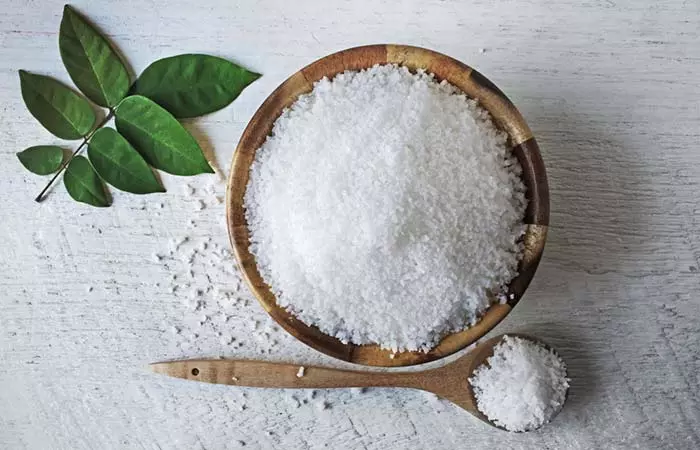
You Will Need
- Sea salt (as required)
- A soft toothbrush
What You Have To Do
- Sprinkle a little sea salt on your tongue.
- Scrub your tongue gently using a soft toothbrush.
- Rinse your mouth with warm water.
- You can also add a teaspoon of salt to a glass of warm water and use it as a mouth rinse.
How Often You Should Do This
Do this twice daily for best results.
Why This Works
Sea salt is another great remedy for treating a white tongue. It is naturally antiseptic, antibacterial, and exfoliating and can help alleviate oral problems that could be triggering the condition (7).
6. Aloe Vera Juice

You Will Need
1 tablespoon of fresh aloe vera juice
What You Have To Do
- Swish a tablespoon of aloe vera juice in your mouth for a few minutes and then spit it out.
- You can also drink a tablespoon of aloe vera juice for added benefits.
How Often You Should Do This
Do this 2 to 3 times daily for 2 weeks to start seeing results.
Why This Works
Aloe vera has natural anti-inflammatory and antimicrobial properties. These properties can help treat oral conditions like oral lichen planus that could be responsible for the development of a white tongue (8).
7. Colloidal Silver
You Will Need
- 1 tablespoon of colloidal silver
- 1 tablespoon of water
What You Have To Do
- Mix a tablespoon each of colloidal silver and water.
- Use this solution to rinse your mouth for a couple of minutes.
- Spit it out and rinse your mouth thoroughly with water.
- You can also opt for a colloidal silver-based mouthwash.
How Often You Should Do This
You must do this 2 to 3 times daily for optimum benefits.
Why This Works
Colloidal silver is a wonderful remedy for treating oral infections that could be causing your tongue to turn white.
It can help eliminate multiple oral microbes like fungi and bacteria (9), (10).
8. Garlic

You Will Need
2-3 garlic cloves
What You Have To Do
- Crush two to three garlic cloves.
- Apply the crushed garlic paste to your tongue.
- Leave it on for about 10 minutes and spit it out.
- Rinse your mouth with cold water.
How Often You Should Do This
Do this twice daily.
Why This Works
Garlic possesses strong antimicrobial properties due to the presence of organosulfur compounds like allicin in it. Allicin gets activated upon being crushed and can help eliminate the infection-causing microbes in your mouth (11).
9. Oregano Oil

You Will Need
- 1 drop of oregano oil
- 1 tablespoon of coconut oil (or any other carrier oil)
What You Have To Do
- Add a drop of oregano oil to a tablespoon of any carrier oil.
- Swish this mixture in your mouth for 10 to 15 minutes.
- Spit the oil out and brush and floss as usual.
How Often You Should Do This
You must do this once daily for the desired effects.
Why This Works
Oral infections caused by pathogens are one of the major triggers of a white tongue. Oregano (Origanum vulgare) oil exhibits strong antimicrobial properties against oral microbes like candida that cause oral thrush (12).
10. Pau D’arco Tea

You Will Need
- 2 teaspoons of pau d’arco bark
- 4 cups of boiling water
What You Have To Do
- Add two teaspoons of pau d’arco bark to four cups of water.
- Bring it to a boil in a saucepan.
- Simmer for about 20 minutes.
- Cool the tea and strain.
- Drink the pau d’arco tea at regular intervals in small amounts.
- Refrigerate the remaining tea.
How Often You Should Do This
You must drink 1 to 2 cups of this tea daily.
Why This Works
The antifungal nature of pau d’arco tea can help combat oral fungal infections naturally. Its anti-inflammatory properties can also help alleviate a swollen tongue (13).
11. Apple Cider Vinegar
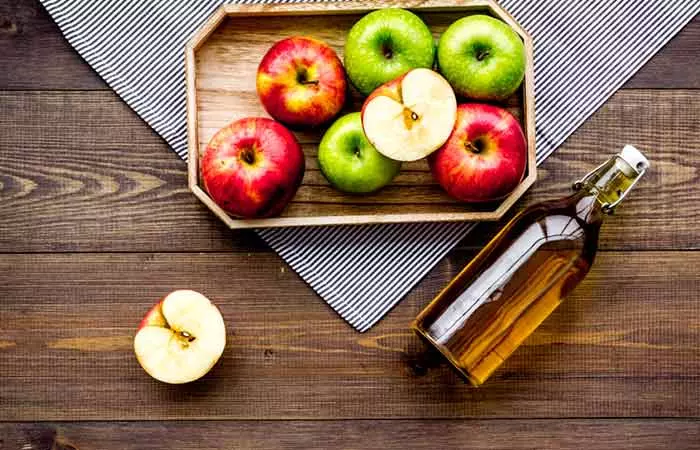
You Will Need
- 1 tablespoon of raw apple cider vinegar
- 1 glass of warm water
What You Have To Do
- Add a tablespoon of raw apple cider vinegar to a glass of warm water.
- Mix well and swish this mixture inside your mouth for a couple of minutes.
- Spit it out and rinse your mouth with water.
- You can also drink apple cider vinegar.
How Often You Should Do This
You must follow this procedure at least once daily.
Why This Works
If you are looking for an effective solution for oral thrush specifically, apple cider vinegar is one of the best oral thrush home remedies. It is a rich source of multiple nutrients, and it also exhibits powerful antimicrobial properties (14). These properties can help treat fungal infections like oral thrush quite easily, thereby helping you get rid of a furry tongue.
12. Glycerin

You Will Need
- Vegetable glycerin (as required)
- A soft toothbrush
What You Have To Do
- Pour a little vegetable glycerin on your tongue.
- Using a soft toothbrush, scrub your tongue gently.
- Rinse your mouth with plain water.
How Often You Should Do This
You must do this twice daily to start seeing results.
Why This Works
Glycerin (glycerol) can help you get rid of a white tongue quite effortlessly, especially if the underlying cause for the condition is a dry mouth (15). It moisturizes your tongue instantly and prevents further issues .
13. Cranberry Juice

You Will Need
1 glass of fresh cranberry juice
What You Have To Do
Consume a glass of fresh cranberry juice daily.
How Often You Should Do This
You must drink fresh cranberry juice once daily.
Why This Works
Cranberry juice is a powerful antimicrobial agent that can help you get rid of the pathogens responsible for oral infections. It is also a popular remedy for candida, one of the main causes of oral thrush and the subsequent white coating on your tongue (16).
14. Neem (Indian Lilac)

You Will Need
- 1 tablespoon of dried neem leaves
- 1 cup of water
What You Have To Do
- Add a tablespoon of dried neem leaves to a cup of water.
- Bring them to a boil in a saucepan.
- Continue to simmer until the water is reduced to half the initial volume.
- Strain and allow the neem solution to cool.
- Swish this solution in your mouth for a minute or two and spit it out.
- Rinse your mouth with warm water.
How Often You Should Do This
You must do this twice daily until you notice an improvement in your condition.
Why This Works
Neem possesses excellent antifungal and antibacterial properties that can help clear infectious oral pathogens from your mouth (17), (18). This, in turn, also helps in eliminating a white tongue with time.
 Quick Tip
Quick TipAnecdotal evidence suggests you can also use ingredients like tea tree oil, peppermint oil, fennel seeds, ginger, chamomile tea, sage, honey or cinnamon to treat white tongue. Ensure that you do a patch test and proceed with caution before using these ingredients. Once you have begun using these remedies, you should also follow a few tips to reduce your odds of developing a furry tongue again.
Jennifer Chiu, a YouTuber, shares how she got rid of white tongue in one of her vlogs: “Water flosser is one of the best purchases I have made, and I use this every single day. I use a tongue scraper to get rid of all the gunk on the tongue and bad breath instantly. Gargling with salt water and intake of probiotics helps with this condition (i).”
Prevention Tips
- Use a fluoride toothpaste for brushing your teeth.
- Use a mouthwash regularly.
- Floss daily.
- Quit smoking or chewing tobacco.
- Limit your alcohol intake.
- Follow a healthy diet that consists of several fresh fruits and vegetables.
- Visit your dentist once every six months.
 Quick Tip
Quick TipInfographic: 4 Conditions That May Cause White Tongue
White tongue, or white patches on the tongue, may be completely benign and due to poor oral hygiene. However, some medical conditions also present white patches as a symptom and need to be considered seriously for medical attention.
Check out this infographic to learn more about 4 medical conditions that are linked to white tongue. Illustration: StyleCraze Design Team
While poor dental hygiene or conditions like oral thrush, dehydration, and dry mouth can lead to a white coating on the tongue, it can also be cleared up easily. You can try the home remedies mentioned above to get rid of a white tongue naturally and effectively. However if you develop fever, or open sores or other complications, you must consult a doctor at the earliest.
Frequently Asked Questions
What are the long-term effects of a white tongue?
The long-term effects of having a white tongue can include gum disease, persistent bad breath, and a higher risk of infections like oral thrush. It may also indicate improper eating practices and dental hygiene, which, if left untreated, may result in nutritional deficiencies and other systemic health issues.
Can a white tongue be a sign of a serious condition?
Yes, a white tongue can indicate a serious condition, especially if it persists or is accompanied by other symptoms. It can also indicate systemic problems, including diabetes, leukoplakia, or oral thrush, which need to be evaluated further by consulting a healthcare provider.
What is the difference between a white tongue and bumps on the tongue?
The swelling or bumps (papillae) on your tongue are usually a result of poor oral hygiene. They can even be caused due to irritations from hot foods. When food, bacteria, debris, or dead cells get trapped between these inflamed bumps, a white coating is formed on the tongue.
How long does it take for a white tongue to go away?
A white tongue usually disappears in a few weeks. With treatment, it will disappear even faster. However, if the condition persists, it is best to seek medical attention immediately.
What nutritional deficiency causes white tongue?
Some believe that a deficiency or vitamin B12 or iron, which causes anemia, may lead to a pale or white tongue. However, more information is needed in this regard.
Does excess stomach acid cause white tongue?
No, excess stomach acid does not cause the tongue to turn white. What it may cause is a burning sensation or pain on the tongue and the inner cheeks.
Can gastritis cause a white tongue?
Yes, stomach disorders like gastritis can cause rapid changes in the coating of the tongue depending on the severity of the disease (19).
How to get rid of white tongue permanently?
To permanently get rid of white tongue, practice good oral hygiene by inculcating certain habits, such as gently scrubbing your tongue with a tongue scraper or toothbrush twice a day, using an antibacterial mouthwash every day to rinse your mouth, maintaining a balanced diet, drink lots of water, abstain from alcohol and tobacco use. Consult a dentist or other medical practitioner for additional assessment and treatment if the situation doesn’t improve.
Illustration: Home Remedies For White Tongue And Prevention Tips

Image: Stable Diffusion/StyleCraze Design Team
Learn about various natural treatments to help reduce white tongue and improve oral health! Get tips on how to keep your mouth healthy and clean by clicking on the video below.
Personal Experience: Source
StyleCraze's articles are interwoven with authentic personal narratives that provide depth and resonance to our content. Below are the sources of the personal accounts referenced in this article.
i. HOW TO: Get Rid of White Tongue & Bad Breath INSTANTLY!;https://www.youtube.com/watch?v=7gO7FBAGZ1o
References
Articles on StyleCraze are backed by verified information from peer-reviewed and academic research papers, reputed organizations, research institutions, and medical associations to ensure accuracy and relevance. Read our editorial policy to learn more.
- “Oral Candidiasis” National Library of Medicine
- “Antibacterial activity of baking soda” The Compendium of Continuing Education in Dentistry, US National Library of Medicine
- “Use of Probiotics and Oral Health” Current Oral Health Reports, US National Library of Medicine
- “A Review on Antibacterial, Antiviral, and Antifungal Activity of Curcumin” BioMed Research International, US National Library of Medicine
- “Role of curcumin in systemic and oral health: An overview” Journal of Natural Science, Biology and Medicine, US National Library of Medicine
- “Oil pulling for maintaining oral hygiene – A review” Journal of Traditional and Complementary Medicine, US National Library of Medicine
- “Antimicrobial properties of salt (NaCl) used for the preservation of natural casings” Food Microbiology, US National Library of Medicine
- “Clinical Effectiveness of Aloe Vera in the Management of Oral Mucosal Diseases- A Systematic Review” Journal of Clinical and Diagnostic Research, US National Library of Medicine
- “Silver colloidal nanoparticles: antifungal effect against adhered cells and biofilms of Candida albicans and Candida glabrata” Biofouling, US National Library of Medicine
- “Silver nanoparticles as active ingredient used for alcohol-free mouthwash” GMS Hygiene and Infection Control, US National Library of Medicine
- “Antimicrobial properties of allicin from garlic” Microbes and Infection, US National Library of Medicine
- “In vitro activity of origanum vulgare essential oil against candida species” The Brazilian Journal of Microbiology, US National Library of Medicine
- Pau D’arco, University of Colorado, Denver
- “Antimicrobial activity of apple cider vinegar against Escherichia coli, Staphylococcus aureus and Candida albicans; downregulating cytokine and microbial protein expression” Scientific Reports, US National Library of Medicine
- “Interventions for the management of dry mouth: topical therapies” Cochrane Database of Systematic Reviews, US National Library of Medicine
- “Promising results of cranberry in the prevention of oral Candida biofilms” Pathogens and Disease, US National Library of Medicine
- “Therapeutics Role of Azadirachta indica (Neem) and Their Active Constituents in Diseases Prevention and Treatment” Evidence-Based Complementary and Alternative Medicine, US National Library of Medicine
- “Azadirachta indica: A herbal panacea in dentistry – An update” Pharmacognosy Reviews, US National Library of Medicine
- “Tongue coating microbiome as a potential biomarker for gastritis including precancerous cascade” National Library of Medicine
Read full bio of Dr. Thomas Connelly
Read full bio of Shaheen Naser
Read full bio of Arshiya Syeda
Read full bio of Dipti Sharma










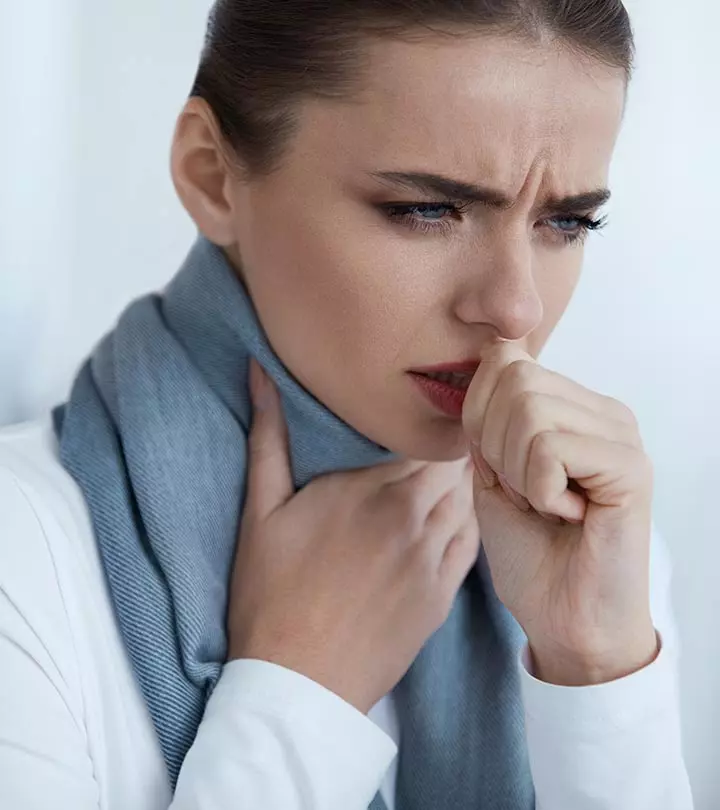




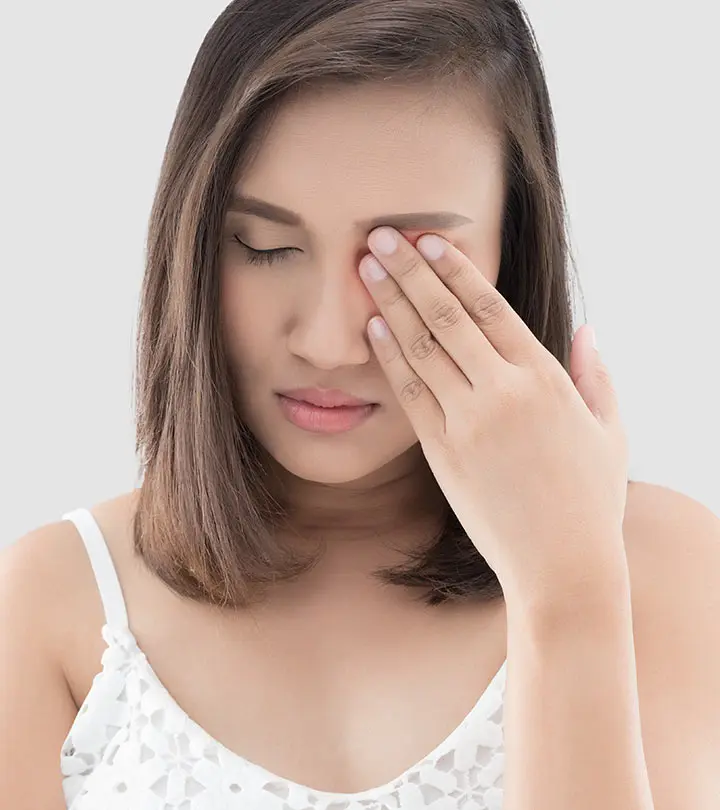







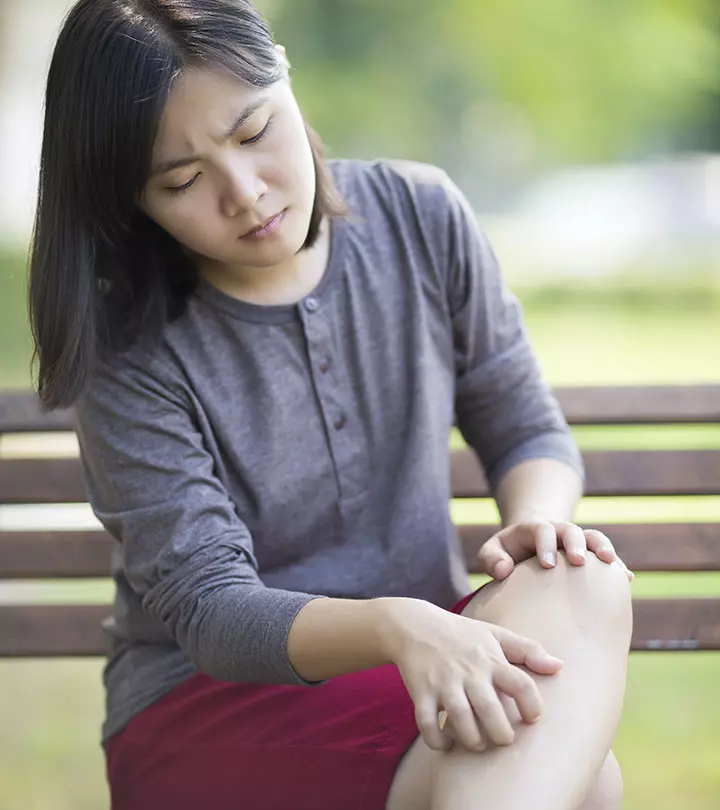
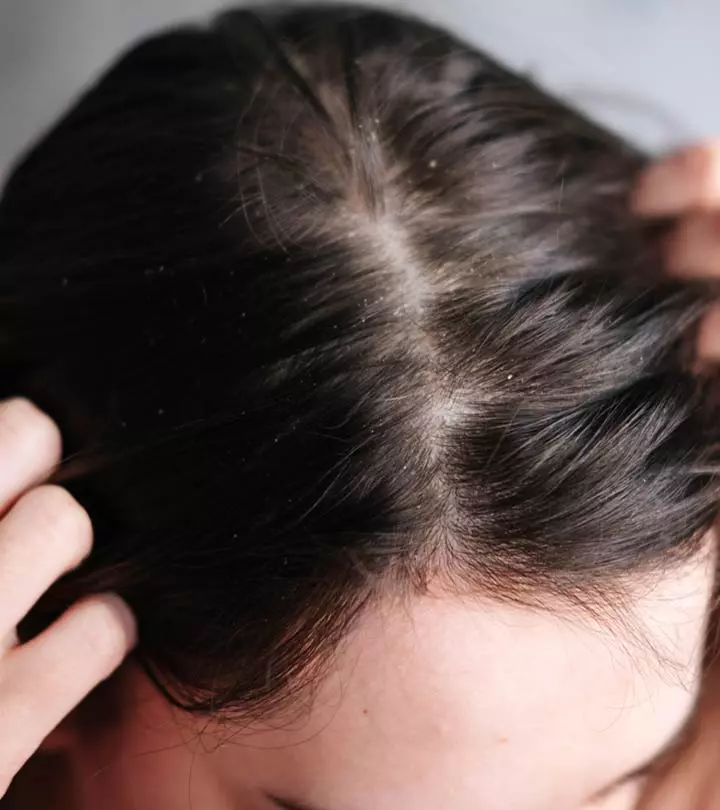
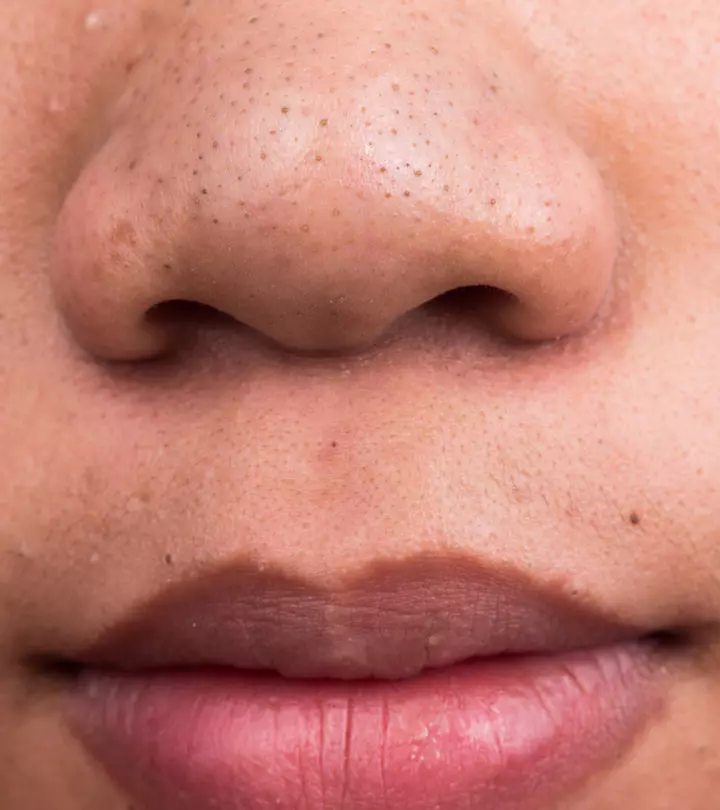
Community Experiences
Join the conversation and become a part of our empowering community! Share your stories, experiences, and insights to connect with other beauty, lifestyle, and health enthusiasts.